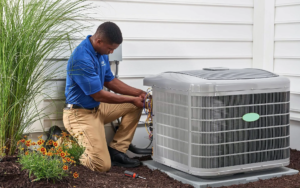SD BOTOX, or botulinum toxin type A, is a popular injectable that temporarily reduces facial lines and wrinkles. It’s also used to treat certain eye muscle conditions caused by nerve disorders, including uncontrolled blinking (benign essential blepharospasm) and a condition in which the eyes don’t point in the same direction (strabismus).
A medical practitioner should prescribe and give BOTOX injections. They should be registered on a register that shows they meet set training and skill standards.

Botox is an FDA-approved prescription medicine that relaxes muscles and reduces or eliminates unwanted wrinkles. It is made from a type of bacteria (Clostridium botulinum) that is carefully purified for medical use. When injected, it blocks certain nerve signals that make your muscles contract. Botox keeps your face from tightening over time, which smoothes out fine lines and wrinkles and improves the appearance of your skin. It usually lasts 3-6 months before it wears off.
Doctors first rub an anesthetic cream on the injection area to numb it before injecting the medicine. The procedure only takes a few minutes and can be done right in your doctor’s office. There are several different types of Botox, but they all contain the same active ingredient and work in a similar way. The main difference is that some formulas may have a higher or lower concentration of the active ingredient.
The most common cosmetic uses of Botox are to soften lines around the eyes and forehead, including glabellar frown lines and crow’s feet. Some doctors also use it to treat thick bands in the neck, gummy smiles and lips, and other areas of excess muscle bulk. Other types of Botox are used to treat medical conditions like chronic migraines, specific bladder problems and excessive sweating.
Doctors have found that Botox injections can also relieve a condition called cervical dystonia, which is caused by overactive muscles in the neck and shoulders. It can cause a painful spasm that affects one side of the head and neck. Some studies show that Botox can also prevent migraines. The FDA approved this use of the medication in 2010. Migraine patients who received Botox had fewer headaches than those who didn’t receive it.
How is Botox injected?
Botox injections are performed right in your doctor’s office. The practitioner will cleanse the skin in the area that is being treated and may numb the area using topical anesthetic or a numbing cream, especially for treatments on the palms of the hands or feet (to treat heavy sweating). Before injecting, your practitioner will review the treatment with you to make sure you understand it and answer any questions you have.
The procedure is quick and relatively painless. Your practitioner will use a fine needle to inject small amounts of botulinum toxin into the targeted muscles. For cosmetic treatments, the face is usually injected, but other areas can be injected, as well. Your practitioner will choose the injection sites for each treatment based on your unique facial features and the muscles that need to be injected.
Once injected, the Botox starts to work by blocking nerve impulses that cause muscle contraction and relaxing those muscles. Over time, the skin overlying the muscles becomes smooth and soft, reducing the appearance of fine lines and wrinkles. The effect lasts 3-6 months before it needs to be repeated.
Injections are very safe when done by a trained, experienced practitioner. The most common side effects are pain, bruising and swelling in the injection site. Other, less common side effects include flu-like symptoms, headache and upset stomach.
It is important to only have your Botox injections done by a qualified and experienced practitioner. Having your injections done by someone who is not trained or certified could cause the botulinum toxin to spread from its original target and have a more severe and possibly life-threatening affect on surrounding muscles, such as weakness in swallowing, loss of bladder control or trouble breathing.
The practitioner will also have a detailed knowledge of the thickness of your skin and the type of muscle to be found in different areas of the face, which will allow them to judge whether numbing cream is needed and how deep the needle must be inserted. For some muscles, such as the masseter muscle in the jaw, injection must be inserted very deeply to have a lasting effect.
What are the risks of Botox injections?
It’s important to remember that Botox is an injectable drug that can have serious consequences if not administered properly. This is why it’s essential to only receive Botox from licensed medical professionals with extensive training in cosmetic procedures like this.
The most common risk of receiving Botox is a mild allergic reaction at the injection site. You can help reduce your chances of an allergic reaction by telling your doctor about any allergies you have or any medications you take.
Another potential side effect of receiving Botox is infection at the injection site. If you develop an infection at a Botox injection site, your doctor may need to delay your treatment until the infection clears up.
There is also the possibility that Botox can spread to areas other than where it was injected. This can cause a potentially life-threatening condition called botulism. This happens when the botulinum toxin spreads beyond the injection sites and affects nerves and muscles in other parts of the body. It is very unlikely to occur in people who are being treated with recommended dosages of Botox for conditions such as migraine, axillary hyperhidrosis, glabellar frown lines or limb spasticity.
It is also possible that the effect of Botox may wear off over time. This can lead to a need for more frequent treatments to maintain the desired results. In addition, it is possible that the results of a Botox treatment will fade over time due to the patient developing a tolerance to the drug.
Bruising at the injection site is very common, but usually not painful. You can reduce your chance of bruising by not taking certain medications for 24 hours before the procedure, including aspirin and other anticoagulants. It is also important to avoid rubbing or massaging the area where you received Botox injections.
Some people may experience a drop of the brow, known as brow ptosis. This is also unavoidable with the current versions of Botox, which use the purified form of the botulinum toxin. This problem is easily avoided if you are treated by an experienced injector.
What are the benefits of Botox injections?
Cosmetic Botox treatments offer a wide range of benefits, including skin rejuvenation and wrinkle reduction. The injection process is quick and easy, requiring no downtime for patients. This makes the procedure an ideal choice for people who want to reduce signs of aging but do not wish to undergo surgical procedures like facelifts and brow lifts. In addition, the effects of Botox are temporary, giving individuals more flexibility in their aesthetic choices.
Another benefit of Botox is that it can be used on all types of skin and hair colors and tones. Many anti-aging skin treatments can only be effective on certain shades of skin, which limits their use and results. However, because cosmetic Botox is non-toxic and non-allergenic, it can be used on all skin tones and colors.
The injectable works by blocking nerve impulses that cause muscles to contract, which helps to soften or eliminate unwanted wrinkles. The treatment is very safe, and it can be repeated as needed to achieve desired results. Injections are also relatively inexpensive when compared to other facial and wrinkle treatments.
Because it is a prescription drug, Botox should only be administered by a qualified health care provider. Injections done by inexperienced providers can lead to undesirable side effects, such as drooping eyelids and eyebrows, or a “frozen” appearance.
Before you decide to get cosmetic Botox, talk to your doctor to discuss what goals you have for the procedure. This will help you decide how much botulinum toxin to receive and what areas of the face you would like to treat. Your doctor will then explain how the procedure works and answer any questions you may have.
Some people fear the pain and discomfort of receiving Botox injections, but most people do not experience any discomfort during the treatment. For those who do feel some discomfort, a topical anesthetic can be applied before the injections to decrease the sensation. The injection itself takes only about a minute, and the needle is very small. Your doctor will likely pre-ice the area to minimize any discomfort as well.


